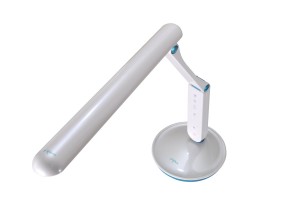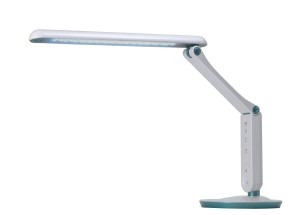
Lighting is a Drug
Lighting is a drug.
It can improve our alertness, sleep, mood, visual acuity, performance and sustainability. Now, the new generation of tunable LED lights (a semiconductor diode that emits light when a voltage is applied to it) give us control of our own environment.
This September Mary Jane Caster, executive designer from r.o.i. Design attended the Lighting Forum XV, hosted by Crites, Tidey & Associates. Included in this seminar was a presentation by Stan Walerczyk, entitled “Human Centric Lighting” With over 50 white papers and published articles to his credit, Stan is actively promoting Human Centric Lighting, saying that Human Centric Lighting may become more significant than Edison creating the light bulb!

Here are the fun facts on our new lights:
1) User can customize personal mood setting from warmer light for a time of relaxation to a daylight setting for a focused work environment.
Bright Mode – READING 4500K-4700K, stimulates concentration and reduces eye strain with mid-range color
Cool Mode – CONCENTRATION 6200K-6500K, increases attention and concentration of high range color temperature
Warm Mode – CREATIVE & RELAX 2500K-2700K, promotes relaxation and improved mood with low-range color temperature also encourages a deep sleep with comfortable soft light.
2) Timer Function
It goes off automatically after 50 minutes
3) Energy Saving
LED technology offers reduced energy an maintenance costs when compared with conventional light sources.
4) Long Life-Time
It’s rated 40,000 hours and 25 years life span under normal use
5) Easy to adjust color temperature and illumination
6) Environment Friendly
It’s free of UV and IR radiation minimizing discoloration and fading of materials.
Lighting affects our mood.
At different times of the day we need different types of light. A blue sky at noon is 14,000K (Kelvin) (*) and if we are lucky enough to be outdoors, we benefit from this light. But indoors, increasing the blue spectrum and increasing our typical 3,500K environment to 5,000K promotes visual acuity, and our circadian rhythms, as well as energy savings. As the sun is lower, our light should get warmer. Studies show that SAD (seasonal affective disorder) can be treated using Human Centric Lighting.
Lighting affects our productivity.
Using 12,000K light for the first 30 minutes of your day or before an important meeting will energize you and promote alertness.
How do we get control of our lighting needs? Getting rid of parabolic troffers and using dimmable and Kelvin changing lighting is a start. Here is what some folks have done:
- 3rd shift workers in air traffic control have increased their office lights to 17,000K to keep alert and reduce mistakes.
- For window users, there is an app that reduces the blue light on your screen that is great for eye strain. www.justgetflux.com
- Philips School Vision video on You Tube documents a student’s day with artificial light changes. The first 30 minutes are at 12,000K (equal to 100fc) then are set at 5,000K to 6,500K for working. After recess the lights are set to 2,700K for relaxation at nap time. As a result, test scores have increased.
LED lighting is energy saving.
LED lighting has always been promoted as economical, but just in the last six months there has been a 30 to 35% increase in the energy savings of LED lighting. The technology is changing rapidly.
Some manufactures of LED controllable lights are Lumex, Osram, Philips, Telelumen and PlanLED.
(*) Photographers and lighting designers speak of color temperatures in “degrees kelvin.” For example, 3200K represents a typical indoor color temperature and 5500K represents typical daylight color temperature. In the context of lighting, a specific kelvin temperature expresses the color temperature (dull red, bright red, white, blue) corresponding to the physical temperature (warm, hot, extremely hot) of an object.
